. . . . . . . . . . .
from page 1
“There is so much more to the story, details that fill in the gaps and nuance that brings people of the past to life. It is our honor to work with organizations like the Trust that represent differing eras and specialties but share that fundamental vision.”
Each installment of How We Became America: The Untold History runs about two minutes, a quick take that makes them ideal for classroom or online consumption. With the first five launched on May 4, a new episode will


arrive each Tuesday through Independence Day. Learn more at www.battlefields.org/untold.

Pop-Up Tours at Twilight: A New Summer Series

As members crave the battlefield experience provided by the Trust’s captivating experts, the organization looks to answer that call by offering a variety of “Twilight Tours” over a seven-week period, poised to take advantage of warm summer nights.
The series will kick-off on June 18 at the site that represents the largest private battlefield
purchase in America’s history, Slaughter Pen Farm. Since coming into Trust hands in 2006, this hallowed ground, that decided the Battle of Fredericksburg, has been restored to the view the soldiers once had and has welcomed thousands of visitors to walk in the footsteps of the men who fought there on the Trustcreated interpretive trail. Senior Education Manager Kristopher White will steer tour-goers through the consequential site, providing not only an overview of its place in the larger Civil War story but also its role in the larger battlefield preservation narrative. Each tour will be limited to approximately 50 Trust members. Donors who live in proximity to the selected locations will receive an email with registration instructions. Locations include tours taking place at various battlefields from the Civil War’s renowned Eastern Theater
to the gritty Western Theater, as well as those of the American Revolution. Tour-goers will be met by a slew of battlefield buffs, ready to deliver their insight and embrace the physical battlefield landscape before them.
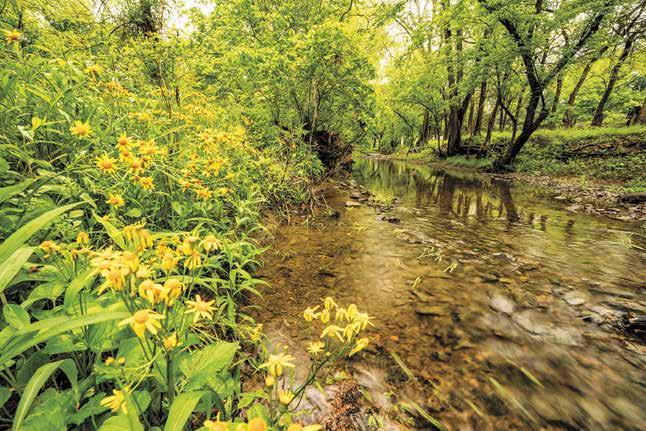
Other sites will include Chancellorsville, Gettysburg, Raymond, Bristoe Station, Mine Run, Yorktown, and Perryville.





2 Civil War News June 2021 2 Civil War News June 2021 CIVIL WAR AUTOGRAPHS LETTERS • DIARIES • STAMPS • CURRENCY Price List Online • Top Price Paid for Quality Material B. M. GREEN P.O. Box 1816N Kernersville, NC 27285-1816 (336)993-5100 • (336)993-1801 www.shop.bmgcivilwar.net bmgcivilwar@triad.rr.com Join the Crew! civilwarnavy.com 1 Year—4 Issues: $37.95 Subscribe Now at civilwarnavy.com Or send a check to: CSA Media, 29 Edenham Court, Brunswick, GA 31523 International subscriptions subject to postage surcharge. Camp Jordan Arena 323 Camp Jordan Pkwy. East Ridge, TN July 24-25, 2021 CHATTANOOGA ANTIQUE MILITARIA & AMERICANA SHOW American Digger® Magazine now has TWO great shows each year! January 15-16, 2022* Omar Shrine Temple 176 Patriots Point Rd. Mt Pleasant, SC For information: Call (770) 362-8671 or (716) 574-0465 Email: anita@ americandigger.com Both shows Open to Public: Saturday: 9-5 Sunday: 9-3 Dealer Setup: Friday 1-7 PM Sat 7-9 AM americandigger.com/american-digger-events/ Swords & Knives Antique Firearms Dug & Non-dug Relics • Civilian Items & Jewelry • Bottles & Stone Artifacts Art, Photos, & Books Militaria & Americana All Eras to WWII • Metal Detectors • Awards & Prizes Both shows feature all this and more: LOWCOUNTRY ANTIQUE MILITARIA & AMERICANA SHOW Display!Trade! Buy!Sell! Note date change! *Temporary date change to avoid New Years Eve conflict.
Cedar Creek. Photo by Buddy Secor.
Untold history.
Subscribe online at CivilWarNews.com
Publishers:
Please send your book(s) for review to: Civil


Middle TN (Franklin) Civil War Show

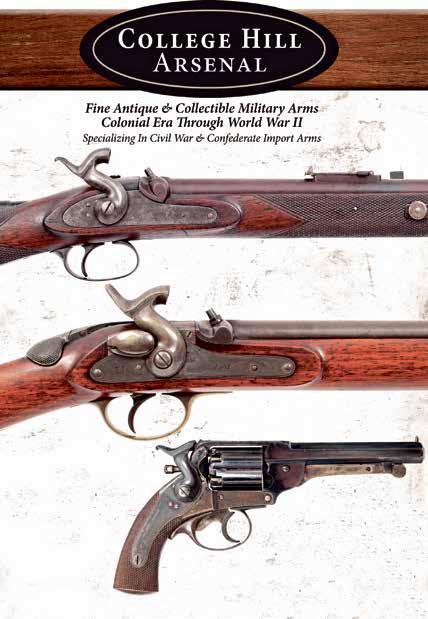

MK Shows presents the 34th Annual Middle Tennessee Civil War Show and Sale at the Williamson County Ag Expo Park, 4215 Long Lane in Franklin. The nation’s largest Civil War show, featuring 800 tables of antique weapons, artifacts and memorabilia from top dealers and collectors around the country and encompassing all eras of military history from the Revolutionary War through World War II.
Appraisers are always on hand to help you identify and value your military collectibles at no cost. Hours are 9-5 on Sat., 9-3 on Sun., parking is free and admission is only $10/adults and children under 12 are free.
This will be a sold out show so make your table reservations early.

3 June 2021 Civil War News 3 June 2021 Civil War News Subscribe online at CivilWarNews.com www.CollegeHillArsenal.com Tim Prince College Hill Arsenal PO Box 178204 Nashville, TN 37217 615-972-2418 Mike Kent and Associates, LLC • PO Box 685 • Monroe, GA 30655 (770) 630-7296 • Mike@MKShows.com • www.MKShows.com
News 520 Folly Road, Suite 25 PMB 379, Charleston, SC 29412
War
Contemporary View of the Rifle Musket
In May 1861, as the “Rebellion” was heating up, the Burlington Daily Times of Burlington, Vermont, published some instructive information on military small arms training. The article correctly asserted that: “Proficiency in the use of the rifle can only be acquired by systematic and diligent practice.”
The paper went on to correctly note that such proficiency was “not ordinarily found in regiments raised in our great cities, with men who have never handled a gun.” The Daily Times praised recruits from rural areas (like Vermont), who “from the daily use of the rifle, knew its power” And were, therefore, “invincible.”
To be kind, the paper overestimated the marksmanship skills of rural folks, but the writer realized not only that the Union army needed to have marksmanship “schools of practice,” established, but was well aware of the existence of such “schools of practice” established in the training curriculums of European armies. Cited were the French marksmanship schools at “Vincennes, Toulouse, St. Omer and Grenoble, where officers and men well instructed in the principles of firing are sent out into the army at large and impart to it the same system and efficiency.” The British army had created a similar program.
The writer went on to note the successful use of the rifle musket in various conflicts of the 1850s, including General

Sir Henry Havelock, “whose Enfield armed men mowed down whole columns of insurgents with Minie rifles” during the Sepoy Rebellion in India, and the French and Piedmontese armies that “wreaked dreadful havoc on the Austrians at Magenta and Solferino.”
While the writer’s guess that the range of the rifle musket would make artillery obsolete would never prove correct, his encouragement of marksmanship training with the new weapons was correct, and largely ignored. Both armies apparently decided that there were other training priorities. There were exceptions during the conflict, most notably Confederate General Patrick Cleburne’s course of instruction for his men based on his own experience in the British army and the training of the Army of Northern Virginia’s special sharpshooter companies.
The Army of the Potomac was less assiduous. Berdan’s Sharpshooter regiments depend ed on the skills acquired in prewar civilian competition, but in the wake of Gettysburg the army decided to implement marksman ship training, although it did not even begin to approach European standards. In spring 1864, all units were supposed to train their members in shooting. The course involved bringing a regiment out to shoot at 50, 100, or 200 yards at a large target. Each man fired five to ten rounds.
The lack of shooting skills evidenced among soldiers during the Civil War resulted in a serious reappraisal in the postwar army, where marksmanship was stressed in the 1870s and 1880s.

.50 caliber Nonsense
It seems that every time there is a mass shooting in some state, laws are proposed in other states, particularly my New Jersey, to restrict legal gun ownership by the state’s governor and/or members of the legislature. This is especially true in an election year. Of course, today, as always, this automatic response often has included legislation that has been
by Joe Bilby
rejected in the past. This time around, New Jersey Governor Murphy has resurrected a plethora of these proposed laws, even though our current firearms regulations are some of the most restrictive in the United States.
Murphy said at the time he endorsed the laws and that they were “perhaps the most sweeping gun violence prevention package in the history of our nation.” Do these laws prevent gun violence? Hardly. Most firearms, more than 80%, are handguns used in crimes and gang feuds in New Jersey. They are smuggled into the Garden State from states with minimal gun laws.
Perhaps the most egregious of these proposed laws for black powder shooters and collectors is





the “50 Caliber Ban,” crafted by people who know next to nothing about firearms history and current historical marksmanship competitions, reenactments, or antique gun collecting. This legislation was originally proposed back when heavy sniper type rifles were introduced by small manufacturers and chambered for the .50 caliber machine gun cartridge. To my knowledge, none of these bulky, heavy, and expensive firearms has ever been used in a liquor store holdup, gang feud, lunatic murder rampage, or other crime. Although there may be a few legally purchased ones in our state, and I see no need to penalize law abiding shooters with such a ban.
Having said that, the proposed law could create a disaster in the historical firearms original and reproduction fields. Let us look at which guns might be impacted. Revolutionary War era original and reproduction flintlocks are usually .69 or .75 caliber. Civil War and earlier rifles and muskets are .54, .58, and .69 caliber; Spencer repeating rifles and carbines used in the War are .50 caliber, as are most carbines of the era. Post-Civil War breechloading metallic cartridge rifles and carbines were originally
manufactured in .50 caliber. The law could be a nightmare for historical arms collectors and those who target shoot and participate in historical reenactments with antique and reproduction weapons. I have already written the governor’s office on this matter, and I suggest that everyone should do the same.
Joseph G. Bilby received his BA and MA degrees in history from Seton Hall University and served as a lieutenant in the 1st Infantry Division in 1966–1967. He is Assistant Curator of the New Jersey National Guard and Militia Museum, a freelance writer and historical consultant and author or editor of 21 books and over 400 articles on N.J. and military history and firearms. He was also publications editor for the N.J. Civil War 150 Committee and edited the award winning New Jersey Goes to War. His latest book, New Jersey: A Military History, was published by Westholme Publishing in 2017. He has received an award for contributions to Monmouth County (N.J.) history and an Award of Merit from the N.J. Historical Commission for contributions to the state’s military history. Email at jgbilby44@aol.com.
The N-SSA is America’s oldest and largest Civil War shooting sports organization. Competitors shoot original or approved reproduction muskets, carbines and revolvers at breakable targets in a timed match. Some units even compete with cannons and mortars. Each team represents a specific Civil War regiment or unit and wears the uniform they wore over 150 years ago. Dedicated to preserving our history, period firearms competition and the camaraderie of team sports with friends and family, the N-SSA may be just right for you.

For more information visit us online at www.n-ssa.org.

4 Civil War News June 2021 4 Civil War News June 2021 12 Issues/Year Subscribe online at CivilWarNews.com
By Lawrence E. Babits




















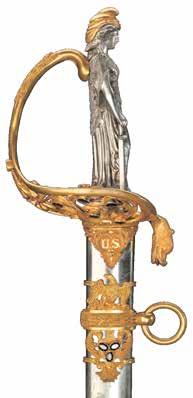






5 June 2021 Civil War News 5 June 2021 Civil War News Subscribe online at CivilWarNews.com Deadlines for Advertising or Editorial Submissions is the 20th of each month.
Civil War Alphabet Quiz – O as in... July 1. General Henry Halleck’s nickname 2. Popular and effective 3-inch rifled cannon 3. Largest battle fought in Florida 4. The first of the Seven Days Battles 5. Nickname for Kentucky infantry unit 6. Double turreted monitor that fought in James River and at Fort Fisher 7. He led the [Union] “Tigers” 8. Walt Whitman’s 1865 poem eulogizing Lincoln 9. U.S. “double ender” sunk by torpedo in Roanoke River, NC 10. Commander of the 15th Alabama on Little Round Top Answers found on page 7. Want To Advertise In Civil War News? ads@civilwarnews.com Call 800-777-1862 CW N Vol. 46, No. 48 Pages, January 2020 $3.50 Civil War News America’s Monthly Newspaper For Civil War Enthusiasts Inside this issue: 10 Black Powder, White Smoke 22 The Graphic War Day Remembrance Day, 2019, GettysburgOn Nov. 23, 2019, reenactors and The world will little note, nor long remember what we say here, but can never forget what they did here. – Abraham Lincoln, November 19, 1863.graves occurs each year, as well.tors are down from its 2000 peak-activities that took place.Teacher Don Mullen, portrays The Delaware Valley Blues march towards the Codori Farm. Buying and Selling The Finest in Americana 11311 S. Indian River Dr. • Fort Pierce, Florida 34982 770-329-4985 • gwjuno@aol.com George Weller Juno Greg Ton • P.O. Box 9 • Franklin, TN 37065 901-487-5944 • GTon1@aol.com Greg Ton Buying and Selling the Finest Confederate, Obsolete and Southern States Currency Since 1978 GregTonCurrency.com Contact Mike at: 910-617-0333 • mike@admci.com Fort Fisher Items Wanted! Provenance a Must! Fort Fisher
Soap
One subject neglected in the study of mid-19th Century material culture is soap. Since the colonial-era soap was produced in America primarily on the farm. It was easily made from the by-products that resulted from the two most common activities of agrarian life, clearing land for fields and slaughtering animals for meat. From the ashes of burnt wood mixed with water, alkali lye was produced. Tallow or animal fat was added to the lye; the resulting mixture boiled to produce soap. There was not much more to it than that, though the process was refined over time.
The major uses for soap were household applications, either for washing clothes or the body. In textile manufacturing, particularly for pre-shrinking and compacting wool cloth, a process called “fulling,” or thickening, and scouring woolens. Colonial-era
America was largely rural and agrarian, so soap making remained widely scattered until nearer the time of the American Revolution. By then any excess local soap production had turned into a minor commercial export item, but the trade was interrupted by the first war of American Independence in 1775. Soap remained a largely non-commercial item locally produced for home use for another fifty years.
By the late 1830s, due to increasing industrialization in the North, more of the population was located in cities. The increased demand for soap could no longer be easily met on a local or individual household basis. The first commercial soap makers were founded near meat packing industry centers. One necessary ingredient of soap was tallow, so this encouraged the first commercial soap makers to locate there. For example, in 1837, Cincinnati, Ohio, was a center

for meatpacking, and attracted Messrs Proctor and Gamble. These two men, who married sisters, began a candle and soap making enterprise that still bears their name today. They were not alone as there were seventeen different soap making companies in Cincinnati alone.

A major change in the production of commercial soap occurred in the 1840s when manufacturers began to replace lye made from ashes with an alkali, sodium carbonate. Sodium carbonate, or “soda ash,” is a form of lye made through a chemical process resulting in a purer compound than wood ash. Almost all soap makers also produced tallow candles, which for most, including P & G, was originally their major business.
The firms usually made soap in one pound bars. Some soap was produced in slabs sold to grocers, who wire-sliced the product
for individual consumers at their stores, like a wheel of cheese. There were few major brands. little advertising was directed at consumers. Soap factories remained mostly regional, centered in or nearby cities with a meat packing industry before the Civil War.
As a result of being located in Ohio, Proctor & Gamble became a major Federal supplier of soap and candles during the Civil War. New York and New England were also commercial hubs for candle and soap manufacturing. The following is an early advertisement for soap that appeared in Harpers Weekly:
“August 6, 1861.
MY DEAR SIRS:
Your Soap is as good as ever. It seems that one box lasts almost a life-time. I am sure it will become a universal thing. Some of the farmers have given up making soft soap since using your Soap. They say it pays to sell their soapgrease and buy your Soap. Some say they save the price of the Soap in wood… Yours, &c., E. PERRY
The above soap is packed in boxes of sixty bars, one pound each, with directions for making each bar into “three gallons of handsome Soft Soap.” Price $5 per box, with a selection from a list of books, or a subscription to a newspaper gratis. Send for circular containing list of books and papers. B. T.
BABBITT”
As the Civil War dragged on, soap and tallow candles became increasingly scarce for both the army and civilians. Letters from soldiers in the field often asked for these items because they were sometimes omitted from their rations. As far as an item of ration, soldiers received soap, whether they used it or not is another matter, while in permanent camp, but it was not part of their marching rations. One officer, Nelson Miles, wrote to the Army & Navy Journal in 1863:
“Will you please call the attention of Headquarters to the necessity of a general order on the matter of personal cleanliness in the Army? Every correspondent of London journals has sneered at our Army in this respect… Bathing should be encouraged in warm weather. Prof. _____ has determined by experiment that a beleaguered garrison can hold out and subsist longer by half whenever the men bathe daily.”
Soap was considered a “camp ration” at four pounds per 100 men, and not issued to soldiers on the march. It was noted by J. Billings in Hardtack and Coffee that:
“The soap, candles, etc., were not issued to the soldier when on the march, as he could not carry them; but, singularly enough, as it seems to me, unless the troops

6 Civil War News June 2021 6 Civil War News June 2021
Florence military prison series — “Washing up.” Library of Congress.
Washing day — Column on the march by Edwin Forbes. Library of Congress.

went into camp before the end of the month, where a regular depot of supplies might be established from which the other parts of the rations could be issued, they were forfeited, and reverted to the government-- an injustice to the rank and file, who, through no fault of their own, were thus cut off from a part of their allowance at the time when they were giving most liberally of their strength and perhaps of their very hearts blood....”

In the Confederacy, Richmond had swollen in size during the war years; the lack of basic necessities made it a very expensive place to
live. The candles and soap commercially made in New England before the war were obviously no longer a source of supply.
In addition, the Union blockade of Confederate ports prevented items like soap from being imported from Europe as easily because priority was given to military arms and medicines. There were many documented instances of smuggling personal necessities like soap and other items into the Southern states by Confederate sympathizers in the North, but supply never came close to reaching the civilian demand for such
and candles. Wax for candles was obtained by boiling the wax off myrtle berries and straining it, and homespun wicks several yards long were passed through a shallow pan of pine rosin and beeswax until approximately the size of a pencil then the long wick wrapped around a bottle, corncob or other item of similar size to produce a Confederate candle. Corn shucks and cottonseed were among the items resorted to for replacing fats in soap making.”
Here are some period receipts [recipes is the modern word] for making several different Civil War-era soaps, from The Confederate Receipt Book published in 1863.
HARD SOAP
Pour twelve quarts of boiling water upon five pounds of unslacked lime. Then dissolve five pounds of washing soda in twelve quarts of boiling water, mix the above together, and let the mixture remain from twelve to twenty-four hours, for the purpose of chemical action. Now pour off all the clear liquid, being careful not to disturb the sediment. Add to the above three and a half pounds of clarified grease, and from three to four ounces of rosin. Boil this compound together for one hour, and pour off to cool. Cut it up in bars for use, and you are in the possession of a superior chemical soap, costing about three and a half cents per pound in ordinary times.
SOFT SOAP
heat. Add your favorite natural oils and botanicals such as rose petals, honey and oatmeal, spices such as cinnamon, and lemon or orange peel and pour the liquid mixture in molds. Chill for a half hour or so and then remove from the mold. Greasing the mold with cooking oil before filling will allow the bars of soap release easily. Bars of soap should cure or rest for a week or so before using.
Craig L. Barry was born in Charlottesville, Va. He holds his BA and Masters degrees from the University of North Carolina (Charlotte). Craig served The Watchdog Civil War Quarterly as Associate Editor and Editor from 2003–2017. The Watchdog published books and columns on 19th-century material and donated all funds from publications to battlefield preservation. He is the author of several books including The Civil War Musket: A Handbook for Historical Accuracy (2006, 2011), The Unfinished Fight: Essays on Confederate Material Culture Vol. I and II (2012, 2013). He has also published four books in the Suppliers to the Confederacy series on English Arms & Accoutrements, Quartermaster stores and other European imports.
essentials.
Even if soldiers felt they could go without soap for extended periods, as so often proves the case, “necessity was the mother of invention,” Southern civilians were known as resourceful people. Cottonseed was ground in a mortar to extract the oil and cooked with lye to produce a crude soap.
Author Victoria Rumble wrote in Shortages and Substitutions of the War-time South: “As farm animals were taken by the army, both C.S. and U.S., meat became scarce and with that came a shortage of fats to make soap
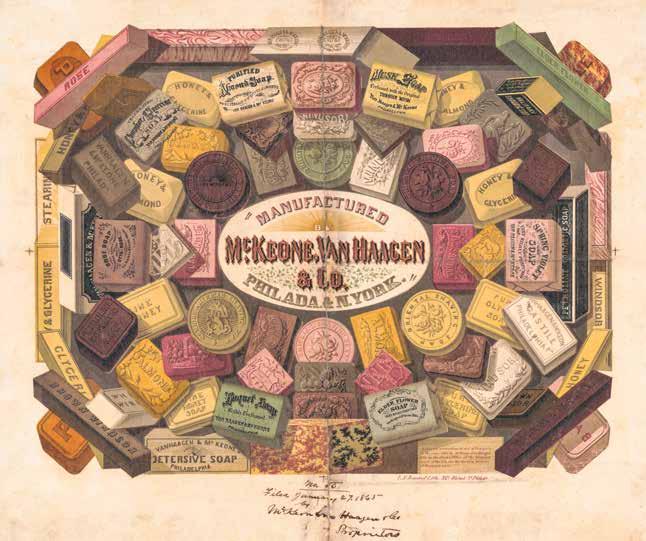
Bore some holes in a lye barrel, put some straw in the bottom, lay some un-slacked lime on it, and fill your barrel with good hard wood ashes, wet it, and pound it down as you put it in. When full, make a basin in the ashes and pour in water, keep filling it as it sinks in the ashes. In the course of a few hours the lye will begin to run. When you have a sufficient quantity to begin with, put your grease in a large iron pot, pour in the lye, let it boil, &c. Three pounds of clean grease are allowed for two gallons of soap.
COLD PROCESS SOAP
Cut chunks of glycerin into slices and heat on stove top at low

Trivia Answers
7 June 2021 Civil War News 7 June 2021 Civil War News Subscribe online at CivilWarNews.com REINFORCEMENTS MAKE ALL THE DIFFERENCE!!! Nobody even comes close to building a Civil War tent with as much attention to reinforcing the stress areas as Panther. Our extra heavy duty reinforcing is just one of the added features that makes Panther tentage the best you can buy! PANTHER Catalog - $2 Web: www.pantherprimitives.com 160 pages of the best selection of historical reenactment items from Medieval era to Civil War era. Includes over 60 pages on our famous tents and a 4-color section. Your $2 cost is refundable with your first order. SEND for copy TODAY The Best Tents in History P.O. Box 32N Normantown WV 25267 (304) 462-7718
Manufactured by McKeone, Van Haagen & Co., Philada. & N. York. Library of Congress.
1. “Old Brains”
2. Ordnance rifle
3. Olustee
4. Oak Grove, Va.
5. “Orphan Brigade”
6. USS Onondaga
7. General Emerson Opdycke
8. “Oh Captain! My Captain!
9. USS Otsego
10. Colonel William C. Oates
Female Soldiers, Spies, Sutlers, Smugglers and Strumpets
In an earlier column I reviewed the brief military careers of a few Southern and Northern women who, motivated by love, went a-soldiering, or tried to. This month we will look at the stories of some women who, with motives other than love, served as soldiers, spies, sutlers, smugglers, and strumpets.
Let’s start with a sutler. In October 1861 the Montgomery Mail told of an adjunct to a Louisiana regiment who was passing through the Alabama capital with her boys. “A really beautiful and exquisitely formed lady, a vivandiere, of the 14th Louisiana regiment, was in the city and created considerable curiosity on the street….”
The Montgomery reporter added that the lady was “dressed in full costume” and, perhaps a bit smitten, repeated that she was “very beautiful.” His reaction to the lady’s enchanting appearance may explain the use of the high-sounding French “vivandiere” in place of the plain old Germanic “sutler.”*
A Louisiana newsman liked the term also, but misused it in an earlier article about “The Vivandiere
of the Monroe Rifles.” In May 1861 the New Orleans Delta reported on a “noble spirited young lady – Miss Leona Neville” who had volunteered to serve. A ceremony was held to present her to the company. She was highly praised for her decision to “brave the dangers of the battle-field.” However, Miss Neville was not a sutler, but a nurse (or infirmère, if you prefer).
Well, that’s enough about sutlers and nurses. The June 1861 Savannah Republican told readers about a woman who joined a Minnesota regiment. She was described as an Amazon (along with Joan of Arc this was a favorite descriptor in these cases) who was “six feet two inches tall… and baffled even the inspection of the surgeon of the regiment in discovering her sex….”
She was outed by somebody who knew her from back home, a printer by trade, “who became shockingly frightened at her threats of vengeance….” After he tattled he vamoosed.
In early 1862 female would-be soldiers were still a novelty. For at least one Southern editor this created an opportunity to ridicule the enemy. In February 1862 the Arkansas True Democrat wrote “The distress among the poor of the North is so great that their papers give account [sic] of women,
GEORGIA’S CONFEDERATE MONUMENTS

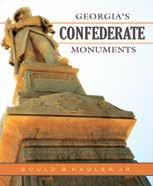
In Honor of a Fallen Nation
Gould B. Hagler, Jr.

This unique work contains a complete photographic record of Georgia’s memorials to the Confederacy, a full transcription of the words engraved upon them, and carefully-researched information about the monuments and the organizations which built them. These works of art and their eloquent inscriptions express a nation’s profound grief, praise the soldiers’ bravery and patriotism, and pay homage to the cause for which they fought.
www.mupress.org
866-895-1472 toll-free
dressed in men’s clothes, enlisting as privates in the army. A widow McDonald has been detected in several regiments and discharged as many times.” The editor did not say why he believed that poverty was Mrs. McDonald’s motivation.
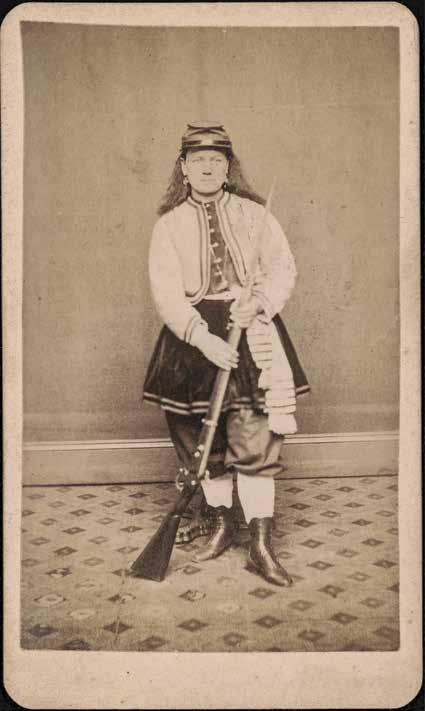
In another case, also early in the war, a Southern woman somehow enlisted in a Kentucky Union regiment and used her position to do some spying.
In August 1861 the Cincinnati Commercial reported on her discovery. “A female spy has been discovered in the first Kentucky regiment. She is from Georgia and enlisted in Cincinnati. She was detected by writing information in regard to the movements of our troops to the enemy. She…says she knows the punishment of a spy is death, and is ready for her fate.” After this report the Savannah Republican urged the Confederate government to take action. “We hope our Government will see to it that this patriotic woman does not suffer the penalty of death, whatever may be the ransom.”
A Virginia woman earned her moment of fame with an attempt at smuggling. In October 1862 the Philadelphia Press told the story of Miss Susan Archer Tally of Norfolk. The previous June, she tried to get a supply
of percussion caps through the lines to Richmond by concealing the goods in a coffin and “alleging that the body of her brother was in it.” When the ruse failed “it was determined that she had acted as a spy between the pickets of the two armies.” The effort earned Miss Tally a visit to Fort McHenry. She was locked up, but not for long. On June 28 the authorities turned her loose and sent her home.
The following month the New York Times reported on a more sophisticated operation. “We are informed that some employee in the War Department has forged a pass, permitting three men and a loaded wagon and a team to pass our lines.” The smugglers nearly got away, but were overtaken by cavalry and captured.
In an update, the paper said that in the wagon were not three men but one man and two women, Miss Buckner and her mother Mrs. Taylor. “These parties, who are related to one of the highest officers of the government, so worked upon his confidence as to procure his good offices in securing a pass for themselves, with which they succeeded in getting through our lines….”
Mrs. Taylor was believed to be innocent. There was no doubt, however, about her daughter. A search resulted in the discovery “in [Miss Buckner’s] bustle, of one hundred and seven ounces of quinine, together with a rebel mail — all intended for Richmond; and a further search at Fairfax Court-house brought to light a letter in secret cipher, concealed in her petticoat.”
Further west, two attractive
8 Civil War News June 2021 8 Civil War News June 2021
A vivandiere associated with two Rhode Island Regiments. Library of Congress.
In the press female soldiers were frequently compared to Joan of Arc. Library of Congress.
This unidentified Confederate woman was held as a prisoner of war. According to a note written on the back of the photo, she was held in Martinsburg. Library of Congress.

sisters in Savannah, Tenn., made the news a month after the battle at nearby Shiloh. The Irwin girls professed strong pro-Union sympathies and were believed. Their home became “a general rendezvous for all the young gallants in the service.” One officer was led “to an indiscreet, not to say criminal, revelation of all he knew about the plans of the campaign and the strength of the army. He is reported as a vain man, and flattery rendered him loquacious, until the whole story was known to the sisters.”
I am reminded of a line from an old James Taylor song: “Snakes in the ocean, fish in the sea, I let a red-headed woman make a fool out of me.” The fool in this case was the brother of Governor Yates of Illinois. The information he disclosed was relayed to General Beauregard “before a second day dawned.” The foolish officer was promptly transferred.
That’s one version, given in the May 31 Chicago Times. Version two ran in the Chicago Daily Tribune a week later. Regarding the charming sisters, a correspondent wrote, “That they are rebels, every one knows who ever
conflicts and instead move on to a story about two other women, cousins this time, Mary and Mollie Bell, aka Tom Parker and Bob Morgan. This tale, like the previous one, has two versions.
The October 1864 Richmond Dispatch gives one account. Mary and Mollie had lived in southwest Virginia with an uncle until the fall of 1862; YES, when he “left them and went over to the Yankees.” Wanting to right this wrong, the sisters “attired themselves in male apparel and were admitted into a cavalry company….” Their company was captured, but all were quickly freed when a Confederate force overtook and scattered their captors. The cousins then left the cavalry for the infantry. They fought bravely with the Thirty-sixth Virginia, shielded from discovery by their company commander who was in on their secret. After their protector was captured at Cedar Creek they were found out and sent to Richmond by General Early. “Bob” and “Tom,” we are told, “were acknowledged by all the soldiers with whom they were associated to be valiant soldiers, having never been known to straggle or shirk duty.” Mollie, in fact, had “killed three Yankees while on picket, and on her return to the brigade was promoted for gallantry to corporalcy.”
Dispatch told a positive story about two patriotic and brave women. The Examiner’s subscribers that day read something less uplifting. Odder than the conflicting accounts is this: the same correspondent submitted both versions to the rival newspapers. I don’t know what to make of that.
A May 1864 issue of the Nashville Dispatch contained an interesting story about women in the Federal army, and one that hints at a corruptive influence greater than the scandal condemned by the Richmond Examiner
“The official records at Washington state that upwards of 150 female recruits have been discovered since the commencement of the war. It is supposed that nearly all of these were in collusion with men who were examined and accepted, after which the fair ones managed to substitute themselves and be mustered into service. Over seventy of these martial ladies, when their sex was discovered, were acting as officers’ servants. In one regiment there were seventeen of them in this capacity.” Nothing was said about the duties of these servants.
Next month we will look at the careers of some of the most famous female participants in the Civil War.

*Merriam-Webster’s online edition states the word “sutler” was first used in English in 1844. It was taken from the Dutch soeteler, which was derived from a Low German word meaning “sloppy worker.” The French means the same thing, but it does sound better.

Source: Betts, Vicki, “Women Soldiers, Spies, and Vivandieres: Articles from Civil War Newspapers” (2016). Special Topics. Paper 28. http://hdl. handle.net/10950/780.
Gould Hagler is a retired lobbyist living in Dunwoody, Ga. He is a past president of the Atlanta Civil War Round Table and the author of Georgia’s Confederate Monuments: In Honor of a Fallen Nation, published by Mercer University Press in 2014. Hagler speaks frequently on this topic and others related to different aspects of the Civil War and has been a regular contributor to CWN since 2016. He can be reached at gould.hagler@gmail.com
entered their household….. The only truth contained in the article, is that the house was the resort for our officers; to a certain extent this was true.”
Why were the officers in the Irwin house at all? According to this correspondent “It was a curiosity, to most, to find anything like civilization on the Tennessee River.” Ouch.
It was all lies and politics. “The author of the article either never was in Savannah or wrote what he knew to be false, for the purpose of injuring one who is dearer to the Illinois soldiers than any other – Gov. Yates.”
Let’s not try to reconcile these
The Daily Examiner told a different story. The captain who escorted Mary and Mollie to Richmond said that they were “common camp followers, and that they have been the means of demoralizing several hundred men in his command. They adopted the disguise of soldiers the better to follow the army and hide their iniquity. Beyond a doubt they had been with the army some time, and we have reason to believe that more of the same sort are left in the ranks, marked by a Confederate uniform.”
The Examiner’s version concluded with this judgment: “The country had here an insight into one of the probable causes of the utter worthlessness and inefficiency of some of the commands in the valley.”
So, on Oct. 31, 1864, the

9 June 2021 Civil War News 9 June 2021 Civil War News Publishers: Send your book(s) for review to: Civil War News 520 Folly Road, Suite 25 PMB 379 Charleston, SC 29412
19th CENTURY LIVING HISTORY! James Country MERCANTILE 111 N. Main Liberty, MO 64068 816-781-9473 • FAX 816-781-1470 www.jamescountry.com Ladies – Gentlemen Civilian – Military • Books • Buttons • Fabrics • Music • Patterns • Weapons Mens, Ladies and Children’s • Civilian Clothing • Military Clothing • Military Accessories • Accoutrements Everything needed by the Living Historian! Our Clothing is 100% American Made! The home of HOMESPUN PATTERNS© Loyal Legion of the Confederacy CSA National Defense Medals & other banned internet items Civil War Recreations WWW.CWMEDALS.COM cwmedals@yahoo.com 1 Smithbridge Rd., Unit 61, Chester Heights, PA 19017
Civil War Era Newspapers


Period newspapers frequently serve as a focus for this column as more and more collections across the country, after digitization, offer access to researchers. (See the archives of this column at civilwarnews.com for details on other newspaper collections.) Recently, several newspapers covering the war period have joined the collections of https://www.genealogybank.com (a subscription site). Please find listed below, in alphabetical order by state, the newest digitized titles. The use of keyword searches and setting date parameters hone the accuracy of
the search results.
From Connecticut, the Litchfield Enquirer. (See below image of this newspaper.)


Next, the Granite State Farmer of Manchester, New Hampshire.





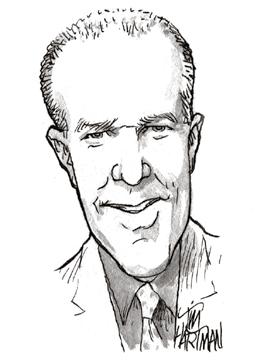
The Empire State contributes three titles: Albany Journal, the New York Semi-Weekly Tribune, and the Troy Daily Times. For events in the final days leading to the outbreak of war, see the Pennsylvania Inquirer and National Gazette for the Country, with issues from 4/5/1860 –1/17/1861. Lastly, from the Palmetto State, the Charleston Tri-Weekly Courier




Enjoy the various topics hidden in the pages of these and other


period newspapers! Until next month, continued good luck in researching the American Civil War!
Michael K. Shaffer is a Civil War historian, author, lecturer, and instructor, who remains a member of the Society of Civil War Historians, Historians of the Civil War Western Theater, and the Georgia Association of Historians. Readers may contact him at mkscdr11@gmail.com or request speaking engagements via his website www.civilwarhistorian.net. Follow Michael on Facebook www.facebook.com/michael.k.shaffer, and Twitter @michaelkshaffer.

10 Civil War News June 2021 10 Civil War News June 2021 www.NGRHA.com 43rd Annual Southeastern Civil War Antique Firearms Show and Cobb County Civic Center 548 S. Marietta Parkway, S.E., Marietta, Georgia 30060 $8 Admission Fee. Free for veterans, military personnel, and children under 10. August 14 & 15, 2021 Hours: Saturday 9–5 • Sunday 9–3 • Dug Relics • Guns and Swords • Books • Frameable Prints • Metal Detectors • Artillery Items • Currency • Documents Inquires: NGRHA Attn.: Show Chairman PO Box 503 Marietta, GA 30061 terryraymac@hotmail.com
Historical Publications, LLC Civil War News • 800-777-1862 520 Folly Road, Suite 25 PMB 379 Charleston, SC 29412 www.CIVILWARNEWS.com UP-TO-DATE COVERAGE • PRESERVATION NEWS • BOOK REVIEWS SHOWS, LIVING HISTORY AND REENACTMENTS • HISTORICAL ARTICLES MONTHLY COLUMNS • CALENDAR OF EVENTS STAY INFORMED! Only $41.00/One Year • $71.00/ Two Years THE MONTHLY CURRENT EVENTS NEWSPAPER -FORCIVIL WAR ENTHUSIASTS SINCE 1974 12 ISSUES PER YEAR PRINT & DIGITAL EDITIONS AVAILABLE CALL OR SUBSCRIBE ONLINE TODAY! 2018 CW N Vol. America’s Monthly Newspaper Civil War Enthusiasts Civil and members 48,000 states! County, The Cedar Civil War Trust’s Path to Preservation CW N Vol. 48 2018 $3.50 Civil War News Monthly Newspaper Civil War see page Dancing Inside Bordonaro Many soldiers or Penn., cottagetaking sense,would fought. Hotel ballroomspiritspeople be have tavern ghosts These womanwoundeddancing ballroomexcellentorganizersdinner ball,Gettysburg,Louis, eventSaturdaylargest one, night, story onewhich accompanying photos Gettysburg Dancing the Night Away at the Gettysburg Hotel Master motion Lincoln Scholar Harold Holzer’s Oration at the 154th Anniversary of the Gettysburg AddressEmancipation Proclamation,blessing,African It’sby Frederick time monumentfeature which generations character endorsement looming Critics popmemory. proper hereacknowledgcrisis—now lives out-Wadsworth pedestals, andCausepromise are historians statues.est statues memory age title Lincoln delivers INSIDE EVERY ISSUE
Want to Advertise in Civil War News? Email us at: ads@civilwarnews.com


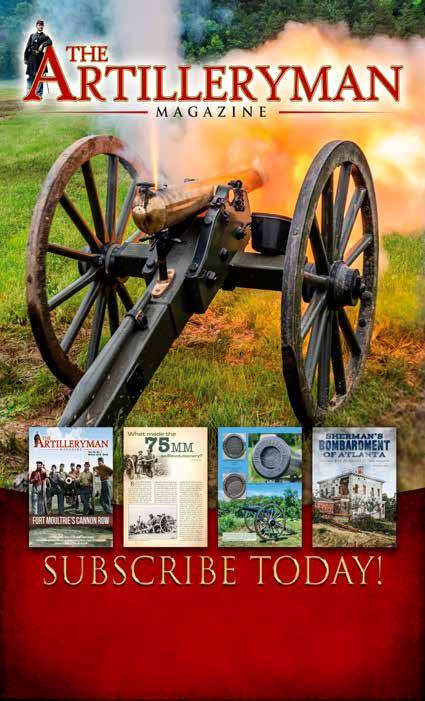

11 June 2021 Civil War News 11 June 2021 Civil War News Digital Issues of CWN are available by subscription alone or with print plus CWN archives at CivilWarNews.com DIXIE GUN WORKS, INC. 1412 W. Reelfoot Avenue PO Box 130 Dept. 17 Union City, TN 38281 INFO PHONE: (731) 885-0700 FAX: (731) 885-0440 EMAIL: info@dixiegunworks.com Gun Works, Inc. Where “Hard-to-Find” becomes easy. For generations, re-enactors, modern hunters and competitive shooters have looked to the DIXIE GUN WORKS’ catalog for the hardest to find blackpowder items. Our all new 2021 catalog continues the tradition with the world’s largest selection of blackpowder replica arms, accessories, antique parts, muzzleloader hunting and sport shooting equipment. VIEW ITEMS AND ORDER ONLINE! www.dixiegunworks.com Major credit cards accepted FOR ORDERS ONLY (800) 238-6785 PROFESSIONAL SERVICE AND EXPERTISE GUARANTEED ORDER TODAY! STILL ONLY $5.00 e Artilleryman is a quarterly magazine founded in 1979 for enthusiasts who collect and shoot cannons and mortars primarily from the Revolutionary War, Civil War to World War II. Now expanded and fully illustrated in rich color throughout the entire magazine. 520 Folly Road, Suite 25 PMB 379, Charleston, SC 29412 • 800-777-1862 • mail@artillerymanmagazine.com www.ArtillerymanMagazine.com The Artilleryman Magazine FOUR INCREDIBLE ISSUES A YEAR Deadlines for Advertising or Editorial Submissions is the 20th of each month. Email to: ads@civilwarnews.com 48 E. Patrick St., Frederick, MD. 301-695-1864 / civilwarmed.org Divided by Conflict. United by Compassion.
Andersonville
The Graphic War highlights prints and printmakers from the Civil War discussing their meaning and the print maker or artist’s goals.
During and after the war, several lithography firms produced large folio prints. Collectors and dealers designate prints over 14 by 20 inches as “large folio.”
Thomas O’Dea’s haunting view of Andersonville is probably the largest lithograph produced with a Civil War theme. A full 40 by 60 inches, it captures the horrors of daily life in the War’s most notorious prison camp.
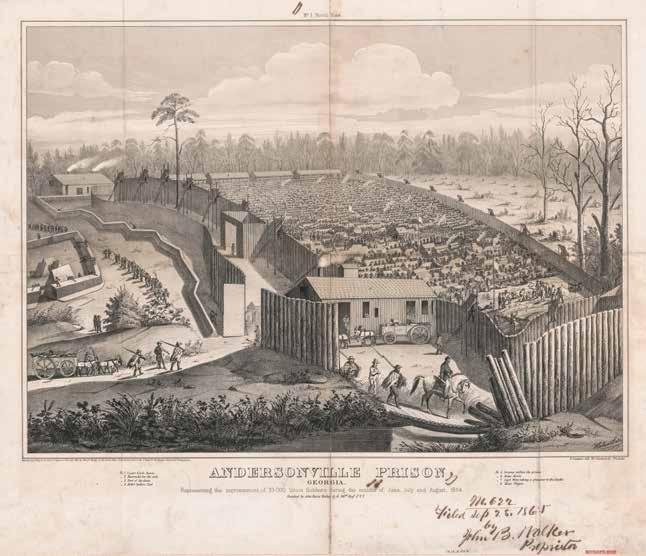
Most lithographs of the time were meant for decoration. O’Dea’s vision of hell was never meant to be hung above the fireplace or any other place of honor. A psychologist might attribute it to the artist’s attempt to purge the memories of Andersonville from his memory.

O’Dea was only 18 when he enlisted with the 16th Maine on Sept. 19, 1863. His death date is given as 1926 and if he enlisted at age 18 in 1863, he must have been born in 1845.1 But it wasn’t until 1885 that the artist/veteran was able to put his memories of Andersonville on paper. In his 1887 pamphlet entitled History of O’Dea’s Famous Picture of Andersonville Prison, he wrote:
“I never drew a picture before in my life. Were I an artist, I could have completed it in a short time. I commenced this work in the winter of 1879 and finished it in 1885 devoting to it my leisure moments for over 5 years. To gratify my own desires I resolved to attempt the task knowing that if successful, my production would be immediately recognized as a faithful and accurate picture of the original prison and vicinity. I have seen different pictures of the subject by different authors. The inaccuracies of all these pictures induced me to try my hand at producing one, hoping in the venture
that I would be able to supply the deficiencies, correct the misrepresentations of the rest, and give the public a true description of the prison, and view of the sufferings of its inmates. In executing the work, I had no picture, map, plan, or scale to guide or instruct me, but I relied upon and drew the whole subject from memory. To the casual observer, such a thing may be looked upon as absurd and impossible, that it is impossible after such a length of time for “memory” to retain such a perfect list and one of details as here portrayed and that I must have had assistance from some other source to be able to present such a vast combination of characters and situations in so perfect manner. Ah, my friends, had you been there and experienced the sufferings that, in common with the thousands of other unfortunates who ‘were there,’ you too, like myself, would have the whole panorama photographed in your memory to remain there to your dying day. For a period of 12 months I resided in the ‘Prison Pens’ of the South, as a ‘Guest’ of the ‘Confederacy.’ There is not a man born that can accurately describe the scenes and sufferings of those who were imprisoned in those southern hells.

ONE HAD TO BE THERE TO WITNESS AND UNDERSTAND IT!”2
Looking at it from the perspective of almost 160 years, O’Dea captured the bleak essence of the place. It’s large size speaks volumes of the horrors of Camp Sumter. Taking center stage is the prison showing the crowding, which according to the legend represents the population of the camp at 36,000 prisoners on August 1, 1864. O’Dea was an inmate from his capture at the Wilderness in May 1864 until his release Feb. 24, 1865. Surrounding the central feature are 20 smaller vignettes depicting in detail the prison’s horrors. He left the lower two vignettes for depictions of liberty on the
left and a self-portrait on the right. Keys in the title margin describe the important features of the camp’s large depiction and a second key reveals the vignettes for the viewer. Above his portrait, an inset vignette shows Captain Wirz with his dogs; another portrays the Angel of Andersonville, Father Peter Whelan. In his pamphlet, O’Dea aptly described the scenes he depicted:
“The scene of indescribable confusion among the prisoners presents them in every imaginable position, standing, walking, running, arguing, gambling, going to or coming from the Branch
with cups, dippers, canteens, or rude pails with water, lying down, dying, praying, giving water or food to the sick, crawling on hands and knees, or hunkers, making fires and cooking rations, splitting pieces of wood almost as fine as matches, the sick being assisted by friends, others “skirmishing for graybacks”, washing clothes and bodies in the branch, trading in dead bodies, fighting, snaring, shouting ...”.3
After the war, O’Dea returning to civilian life became a brick layer. According to his own reckoning, he had seen several depictions of Andersonville and
12 Civil War News June 2021 12 Civil War News June 2021
O’Dea’s Vision of Hell. Library of Congress.
Andersonville in 1865, North view. Library of Congress.
hell-upon-earth-the-andersonville-prison-lithograph/. The Civil War database indicates his age at 18 and enlisting 9/19/1863. http://www.civilwardata.com/active/hdsquery. dll?SoldierHistory?U&2264870.

2. Cited in https://www.fifthmainemuseum.org/2020/12/14/ hell-upon-earth-the-andersonville-prison-lithograph/.
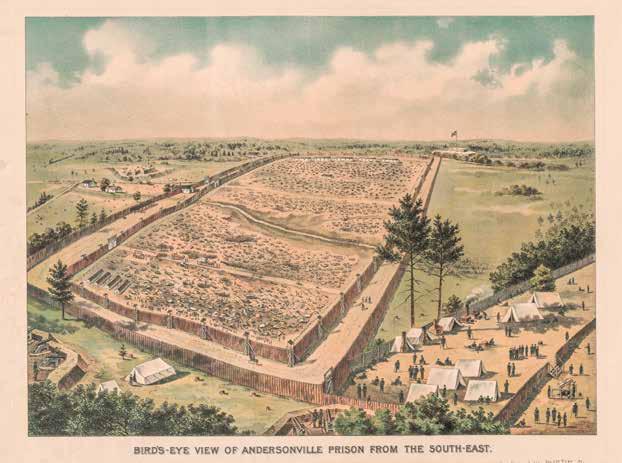

3. Paul Perreault, Town of Malta Historian. http://www.malta-town.org/DocumentCenter/ View/1913/O-Deas-FamousPicture-of-Andersonville.
4. Several prints of Andersonville were published almost immediately, in 1864 and 1865, well before the war’s end, and later in the 1870’s.. See Applewood Books, An Album of Civil War Battle Art, 1988, 104-105.
5. Paul Perreault, Town of Malta Historian. http://www.malta-town.org/DocumentCenter/ View/1913/O-Deas-Famous-
Picture-of-Andersonville.
6. Ibid. O’Dea’s obituary is available on line at https://www.findagrave.com/memorial/84603587/ thomas-o_dea.
After 43 years in the museum field, Salvatore Cilella devotes his time collecting American prints and maps and writing. His last professional position was President and CEO of the Atlanta History Center. His most recent books are Upton’s Regulars: A History of the 121st New York Volunteers in the Civil War (U. Press Kansas, 2009). His two-volume Correspondence of Major General Emory Upton, (U. of Tennessee Press, 2017), received the 2017–2018 American Civil War Museum’s Founders Award for outstanding editing of primary source materials. His latest book “Till Death Do Us Part,” an edit of Upton’s letters to his wife 1868–70, was published last year by the Oklahoma University Press.
found them wanting.4 For the next six years, from 1879 until he finished, O’Dea returned home each night from his labors and worked on his magnum opus. According to one author, the print was popular with 10,000 copies selling for $5 each. By then, O’Dea had moved from Boston to Cohoes, New York, north of Troy and Albany. At one point he changed his listing in the city directory from “mason” to “author and proprietor of O’Dea famous pictures of Andersonville Prison.5
O’Dea passed away in Cohoes and is buried at St. Agnes Cemetery, Cohoes. He left one son
and four daughters. In 1914 he revisited Andersonville where he picked up a federal uniform button and noted that Providence Spring was still running. “One thing he did not find was a copy of his picture which had been removed due to Southern objections.”6
Endnotes:
1. According to the website of the 5th Maine, Peaks Island History Museum, O’Dea enlisted at 16, in 1863 and was born ca. 1848, which does not compute. https://www.fifthmainemuseum.org/2020/12/14/

13 June 2021 Civil War News 13 June 2021 Civil War News
Andersonville in 1865, South view. Library of Congress.
Andersonville, John Ransom, 1882. Library of Congress.
Andersonville, from the Southeast. 1890. Library of Congress.
– MAKER –LEATHER WORKS (845) 339-4916 or email sales@dellsleatherworks.com WWW. DELLSLEATHERWORKS.COM
From the Editor
I first visited Spotsylvania’s Bloody Angle on Memorial Day weekend in 1998. My family had spent the holiday camping on the beach at the Outer Banks, and on the way home to western New York, we did a pass-through tour of the battlefields around Fredericksburg. My four-year-old daughter, Stephanie, had recently discovered Stonewall Jackson and was hungry for more Civil War.
The trip from the Outer Banks home was a twelve-hour drive, so we really only had time for a windshield tour of the battlefields. However, a name like “the Bloody Angle” sounded cool to Steph, and she pleaded for a chance to stop and look around.
To her surprise, it was beautiful and peaceful.
“Where’s all the blood?” she asked.
There was plenty of blood there, I assured her. We just couldn’t see it because it was in the ground.
Since that first visit, I’ve returned to the Bloody Angle hundreds of times, first as a tourist, then as a historian and battlefield guide, and later as a writer. Now, it’s practically in my backyard, and I visit often, sometimes for exercise, sometimes for contemplation and reflection.
Because I now live so close, I make it a point to visit the Bloody Angle every year on its May 12 anniversary. On years when it’s rained, I’ve gotten a particular thrill. While such weather scares off most people, it was historically accurate for the day, so it always makes me feel just a little
bit closer to the men who were there at the time.
This year, the skies could not have been more blue. I walked the field with my youngest son, Maxwell, who, like his sister on her first visit, is four. The battlefield is a place to keep an eye out for deer who might be peeking out of the high grass. It’s place to study the scurrying ants, busy around their anthills in the middle of the hiking paths. It’s a place to wonder if there are snakes coiled in the grass next to the trail, ready to spring out or to slither away. He asks about the blue army and the gray army. He asks where all the fighting was. There was plenty of blood here, I tell him. We just can’t see it.
– Chris Mackowski, Ph.D. Editor-in-Chief

ECW News and Notes
Sarah Kay Bierle assisted with two tours and a book signing in New Market for the battle anniversary on May 15. She says she’s readjusting to in-person events again, but is thrilled to see history enthusiasts on the battlefield and not via a Zoom screen.
to get away from the war),” Bert added.
Bert is working on a post about Cold Harbor for an upcoming ECW book project, as well as a series of posts on Antietam (thanks, Kevin Pawlak!). He’s also looking forward to warmer weather and hiking more of the Appalachian Trail this summer.
Dwight Hughes reports that writing has pretty much come to a halt in such a beautiful spring with yard and garden that need tending, new perennials and annuals getting planted. “Azaleas and rhododendrons are blooming like never before. Not sure if it is the cool weather or just that I finally got around to fertilizing them. But when the heat hits, I get motivated to stay behind the keyboard.” He is heading down to the Hampton Roads CWRT for the first in-person presentation in over a year.
Dwight has been accepted to speak at the U.S. Naval Academy McMullen Naval History Symposium in Annapolis, September 23-24, on “The Sailor and The Soldier at Vicksburg: Grant, Porter and Unprecedented Joint Operations” based on his essay in the upcoming The Summer of ‘63: Vicksburg and Tullahoma.

On May 17, Chris Mackowski joined historian Vanessa Smiley and Taylor Bishop of the American Battle Field Trust’s Youth Leadership Team for ABT’s annual “Fantasy Draft.”
Management.
Civil War Monitor gave a nice review to Imagining Wild Bill: James Butler Hickok in War, Media, and Memory by Paul Ashdown and Edward Caudill, part of ECW’s Engaging the Civil War Series with Southern Illinois University press. Reviewer Aaron David Hyams called it “a well-written and accessible study of historical memory that should be welcome to popular audiences....” The full review is available here: https://www.civilwarmonitor.com/blog/ashdown-caudill-imagining-wild-bill-2020.
ECW Behind the Scenes: ECW’s Relationship with the blog Maine at War
Stephen Davis’ essay, “Bonnie Blue Flop: G.T. Beauregard and Confederate Strategy in the Autumn of 1864,” has just been published in Crossfire, the journal of the American Civil War Round Table of the United Kingdom. Steve was flown across the pond a few years ago to give a couple of talks on the Atlanta Campaign at the group’s annual meeting near London. In his Editor’s Report for this issue, Greg Bayne refers to our author as “Stephen ‘Y’all’ Davis.” Quite a nickname, Steve!
David Dixon just returned from Sequoia where he reunited with the General Sherman tree, the subject of a future post. He had seven Zoom talks this month but is happy to be resuming in-person appearances beginning in September.
Bert Dunkerly and Doug Crenshaw visited Manassas battlefield and enjoyed hiking. “We also found the site of Wilmer McLean’s house (you know, the guy who moved to Appomattox

Kris White and Connor Townsend served as the masters of ceremony for the event, which was broadcast live on the Trust’s Facebook page. On a personal note, Chris’s oldest son, Jackson, graduates from college this month (huzzah!), and Chris took his youngest son, Maxwell, to his first baseball game (go, Yankees!).
Ryan Quint recently gave a Zoom talk to the Rappahannock Valley Civil War Round Table. It was about the civilians of Dranesville and the roles they played in 1861. The Round Table recorded it and put it on YouTube. It’s available here: https://youtu. be/HbSw0ft2QTM
From Terry Rensel: “May’s been a busy month for me. I joined Gordon Rhea and the folks from the Tri-Cities, Tenn., CWRT on a tour of the Spotsylvania Court House battlefield. Visited the Capt. Thomas Espy GAR Post in Carnegie, Penn., as well as the Hagen History Center in Erie, Penn., and got a cool look behind the scenes at some great Civil War artifacts in both of their collections.
Jon Tracey graduated from West Virginia University with an MA in Public History and a Certificate in Cultural Resource
 by Brian Swartz
by Brian Swartz
A lifetime Civil War buff and a Virginia veteran’s descendant, I started writing a monthly Maine at War column for my employer, the Bangor Daily News, in April 2011. A year later, I launched a similarly titled weekly online blog highlighting ordinary Mainers and their wartime adventures.
The blog’s affiliation with Emerging Civil War began a few years ago, when Chris Mackowski interviewed me and graciously wrote a multiple-part column for ECW readers. That led to ECW posting a monthly column about MAW’s latest columns with an invitation for ECW’s readers to read them. The relationship continued to grow, and Chris later invited me to write for ECW a wartime biography of Joshua L. Chamberlain, with whom I share a hometown; Savas-Beatie will publish that book, Passing Through the Fire, this summer.
As for Maine’s contribution to the war, most people, even here in Maine, only know about Chamberlain, the 20th Maine, and Little Round Top. There are so many other Mainers, men and women alike, who served during the war, however.
The Pine Tree State raised 32 infantry regiments, seven artillery batteries, and two cavalry

14 Civil War News June 2021 14 Civil War News June 2021 www.emergingcivilwar.com
Chris Mackowski
Brian Swartz
Sarah Kay Bierle commemorated the anniversary of the Battle of New Market.
Maxwell Mackowski takes a break from a walk at Spotsylvania’s Bloody Angle.
regiments, all their movements traceable through history sources. But Mainers are a wandering lot, and we turned up in just about every campaign, by organized units in the Eastern Theater and individually in the Western Theater. Some served the South, some proved cowards or scoundrels, and most went unnoticed.
My research has discovered treasure troves of Mainer-related Civil War narratives. More than 500 posts later, Maine at War has many stories yet to tell.
10 Questions . . . with Frank Jastrzembski

Frank Jastrzembski is one of ECW’s Polish historians not named “Chris” (Kolakowski and Mackowski being the two that are). His column, “Final Bivouac,” appears in American’s Civil War magazine. Frank was first profiled in the June 2018 ECW newsletter (https://conta. cc/2IuA2yS). You can read his full ECW bio here: https://emergingcivilwar.com/author-biographies/ authors/frank-jastrzembski.
Germany. The next article will be about a grave located in Italy.
What’s been the most challenging aspect of your work?
Raising the funds to cover installation/foundation fees charged by cemeteries for my Shrouded Veterans projects. Not all cemeteries charge a fee to install a veteran headstone, but for those that do, the price can range anywhere from $200 to $1,500. In these cases, I have to cover the expense myself or raise the funds by asking for donations.
Do you have a particular behind-the-scenes story that’s become a favorite? (Maybe not necessarily the story of one of the soldiers but of something that happened that allowed a project to snap into place)
own a CDV of Zerman taken by Matthew Brady. It is the only image of Zerman I have seen. Are you working on any other writing projects at the moment?
from the 96th Illinois.
• ECW visited the Smithsonian’s Museum of American History to visit an iconic stump from Spotsylvania Court House.

that June will see the publication of the next volume in the Emerging Revolutionary War Series, The Winter that Won the War, about Valley Forge.
Frank Jastrzembski has been tracking down the forgotten final resting places of Civil War veterans.
You’ve launched a new collaboration with America’s Civil War magazine. Can you tell us about that?

It has been a pleasure working with Chris Howland, Melissa Winn, and the team at America’s Civil War. We launched the column “Final Bivouac” to share Civil War soldiers’ gravesites.
I am happy to say that many of the graves featured in the column are Shrouded Veterans projects. The column has been a wonderful opportunity to feature graves located not only in the U.S. but throughout the world. In many instances, the photos of these international gravesites are being published for the first time. We just shared a grave in Hawaii, and we previously featured a tomb in
One of my favorites is the case of Brevet Major General Robert Allen and his son, First Lieutenant Robert Allen, Jr. General Allen retired from the army in 1878, and traveled to China, England, and Switzerland. He died on August 5, 1886, and was buried at Cimetière de Chêne-Bougeries in Geneva, Switzerland. His remains were disposed of since his grave lease was never renewed. (This is a common practice in Europe.) I set out to get him a veteran memorial headstone, which was quite challenging since I had to track down his living descendants. Meanwhile, I discovered that his son, Lieutenant Robert Allen, Jr., was wounded in the leg at the Battle of Fair Oaks on June 1, 1862, and it was amputated by Confederate surgeons. He was exchanged soon after, and a second surgery was performed on the same leg. Unfortunately, he died in New York City on July 27, 1862, at the age of 21. He was buried in an unmarked grave at Western Cemetery in Portland, Maine. I managed to get permission from the cemetery to install headstones for both.
Who’s a soldier you’ve “met” along the way whose story has struck you as particularly compelling?
I have always been interested in soldiers of fortune. One that I have been recently researching for an article is Jean Napoleon Zerman. The French officer and filibusterer was appointed a brigadier general of volunteers by President Lincoln in March 1862. The Senate confirmed the nomination on May 5, but recalled it the next day. There is a juicy story behind why, but that I won’t get into the details here. Zerman never served as a general. I was able to track down his burial location in California and discovered that it was unmarked. I’m currently working to add a veteran headstone to his grave. Also, I
I have been plugging away at a book exploring the emotional experiences of Civil War generals during the Mexican War. It will explore their reactions to death on and off the battlefield, how the war affected their families, how it impacted their health, and more. The book is a monumental undertaking. I’m leaving no stone unturned, and I’m pouring over every memoir, journal, diary, or letter I can get my hands on. Once completed, I believe the book will change how Civil War enthusiasts view the Mexican War. I plan to submit the first chapter to the journal Civil War History for publication.
Lightning Round (short answers with a one-sentence explanation)
Favorite primary source?
It would have to be Generals in Bronze: Interviewing the Commanders of the Civil War, mainly because these generals are speaking off the record to artist James Edward Kelly.
Favorite Civil War-related monument?
It is Major General John F. Reynolds’ monument marking the site where he was killed at Gettysburg.
Favorite unsung hero of the Civil War era?

This is a tough one. I’m going to go with Major General Charles Ferguson Smith. If this guy would have lived past 1862, I believe he would have accomplished great things during the war.
What’s a bucket-list Civil War site you’ve not yet visited?
I have always wanted to visit the Mansfield State Historic Site. Richard Taylor doesn’t get the credit he deserves for his victory there.
Favorite ECWS book that’s not one of your own?
I would have to say Grant’s Last Battle: The Story Behind the Personal Memoirs of Ulysses S. Grant
ECW Multimedia
Have you been following the ECW YouTube page? Go to YouTube and search “Emerging Civil War.”
This past month:

• We heard from Diana Drestke about her new book in the “Engaging the Civil War” Series, The Bonds of War, which examines the way the crucible of battle af fected a small group of men
• Nathan Provost and Chris Mackowski shot the breeze about the Overland Campaign.
Plus, we have all sorts of other cool stuff going on there. Be sure to subscribe to the Emerging Civil War YouTube channel to get all the latest.
We also make a number of our interviews available as free podcasts on our Patreon page: https://www.patreon.com/ emergingcivilwar.
On May 12, 1780, the Continental forces under Major General Benjamin Lincoln surrendered the post at Charleston, South Carolina. The loss of the 5,000-man army, almost the entire Continental force in the southern colonies, led to the assignment of General Horatio Gates, the victor of Saratoga, to reverse the fortune of the patriot cause and his eventual encounter with British General Lord Charles Cornwallis at Camden. In a preview of what is planned in 2022 for the Emerging Revolutionary War Series, both the Siege of Charleston and the Battle of Camden are the focal points of the volumes scheduled for release. Check back for updates!
In other news, the second annual Emerging Revolutionary War Symposium happened on May 22 in conjunction with Historic Alexandria. We hope to return to an in-person attendance for 2022. Check the blog, www.emergingrevolutionarywar.org on how to catch the various speaker’s presentations.
by Phill Greenwalt
The month of May in the American Revolution saw two milestones for the Continental Army and the quest for independence. On May 19, 1778, a small force of Continentals led by the Marquis de Lafayette, including Daniel Morgan’s riflemen and Oneida warriors, came face to face with British redcoats under General Sir William Howe. This action, at Barren Hill, Pennsylvania, showed that the training imparted on the soldiers at Valley Forge during the previous winter had paid off. That segues nicely into the announcement
What will happen in person is the first annual Emerging Revolutionary War Bus Tour. This one will focus on the “Ten Crucial Days,” discussing the campaigns of Trenton and Princeton. Tickets are still available for this November 12-14th tour. Check the blog for the itinerary and how to secure your ticket.
You Can Help Support Emerging Civil War
Emerging Civil War is a 501(c)3 not-for-profit organization. If you’re interested in supporting “emerging voices” by making a tax-deductible donation, you can do so by visiting our website: www.emergingcivilwar.com.


15 June 2021 Civil War News 15 June 2021 Civil War News
The shot-up stump from Spotsylvania Court House on display in the Smithsonian.
Cliff
CSArms.com 9150 John S. Mosby Hwy. (Rt. 50) Upperville, Va 20185 for US Mail: PO BOX 602 (540) 592-7273 • SophiaCSArms@aol.com Collector’s Arms 1700-1945 Militaria Specializing in Civil War-World War II
Sophia | Proprietor

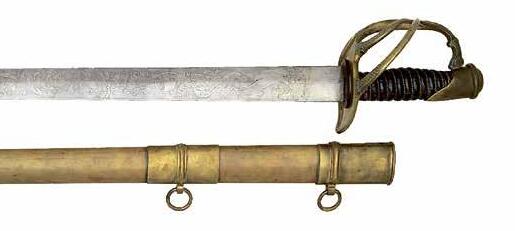




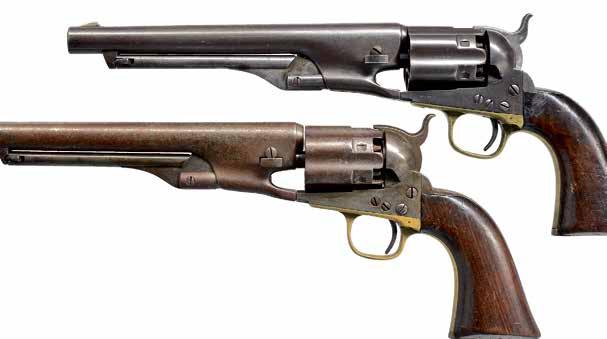

civilwar@poulinauctions.com | poulinauctions.com | 199 Skowhegan Rd, Fairfield, ME 04937 | 207-453-2114 Stephen Poulin, ME Lic # 1115 Premier Firearms And Militaria Auction accepting consignments Nov 5, 6, & 7, 2021 | Fairfield, ME Firearms & Militaria Auctioneers For more info, visit poulinauctions.com, or call (207) 453-2114 and become a consignor today! To view the full May 2021 Auction Prices Realized, please visit poulinauctions.com 0% Or Better! Seller’s Commission On Expensive Items and Valuable Collections Very Fine “As Found” Identified Martial Henry Rifle, S# 3462. EST. $32,500 - $42,500 Rare & Historic Pair Of Colt Fluted Army Revolvers Used By “Jeff Davis Legion” At Gettysburg And Other Battles. Cal. 44. EST. $25,000 - $35,000 Newly Discovered Fine Confederate Griswold Revolver. EST. $25,000 - $30,000 Georgia Confederate Officer Sword Presented To One Of The “Immortal Six Hundred”. EST. $40,000 - $60,000 Extremely Rare And Iconic Confederate Staff Officer’s Sword. EST. $40,000 - $60,000 Sold $92,000 Sold $39,100 Sold $36,800 Sold $47,150 Sold $46,000 Extremely Rare And Unique Louis Bissonnet, Mobile ALA Made Confederate Cavalry Officer’s Saber. EST. $40,000 - $60,000 Sold $44,850
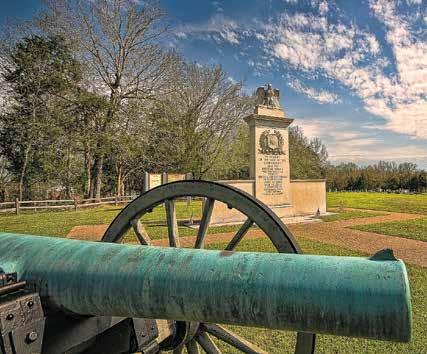

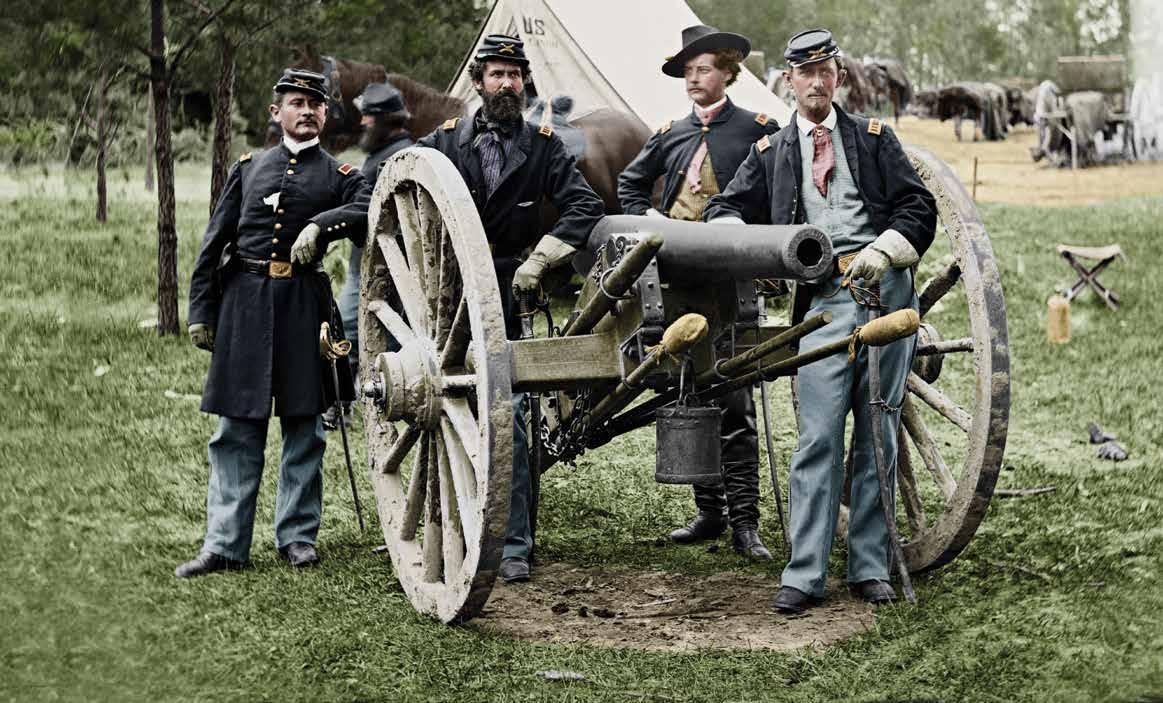
























































































 by Brian Swartz
by Brian Swartz















